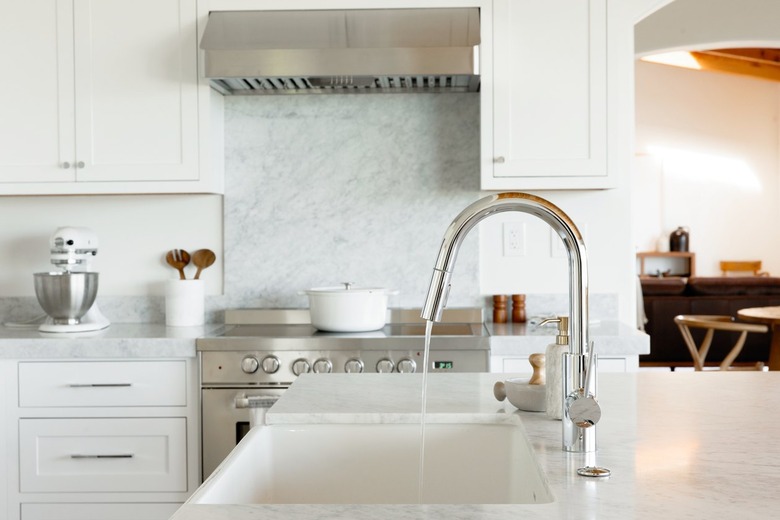How To Tell When A Pressure Switch To A Well Pump Is Gone
We may receive a commission on purchases made from links.
Rural homeowners are often familiar with getting their water from a well, but they aren't always well versed in all of the mechanical components of the system. One essential part of your well is the pressure switch, which tells the well pump when to turn off and on. If it goes bad, you'll know something is wrong with your system.
Purpose of the Pressure Switch
Purpose of the Pressure Switch
Wells have pumps that draw water out of the well and into the bottom of your pressure tank. The top of the tank contains compressed air, which pushes down on the water when you use a faucet to force the water into your pipes. As you use water, the air pressure decreases. When it gets low enough, the well pump starts running again.
The pressure switch serves as the boss of the pump; it sends a signal that tells the pump when to turn on and when to shut off. As the pump works and fills the tank, the pressure switch sends the signal for it to stop when the maximum air pressure is reached. As you use water and the pressure decreases, the switch signals for the pump to turn on when the pressure reaches the low measurement based on the pressure switch settings.
Reasons for Pressure Switch Failure
Reasons for Pressure Switch Failure
Springs inside the mechanism help the pressure switch operate correctly, but those springs don't last forever. Normal wear and tear can cause the springs to become loose and not work as well. If you live in a humid area, the moisture can damage the pressure switch. The electrical wiring connected to the switch can also have issues, including corroded wire ports, rusty contacts, and debris blocking the electrical contacts.
Signs of Pressure Switch Failure
Signs of Pressure Switch Failure
When something's wrong with your well system, you'll often notice it with the water service inside your home. You might also notice changes in how and when the well pump runs. However, the issue could be with any of the well components. Specific signs that the pressure switch could be bad include:
- Well pump continues running even after the pressure tank reaches its top cut-out pressure.
- Frequent on and off cycling of your well pump.
- Pump is running, but the pressure stays low.
- Pressure reaches the low cut-in pressure measurement, but the pump doesn't start.
- You don't have water, yet the pump doesn't kick on.
What to Do
What to Do
The signs of a bad pressure switch could also signal a different problem in your well, so you'll likely need a well professional to diagnose the exact issue. Even if you narrow down the issue to the pressure switch, it might not be immediately clear what the exact issue is. Since pressure switches are connected to your electrical system and are near water, they're dangerous to work with when you don't have experience.
One simple pressure switch test you can do is to check the power source. Make sure the breaker is completely on to ensure the switch is getting adequate power. If this doesn't fix the issue, a professional can diagnose and repair the issue.
